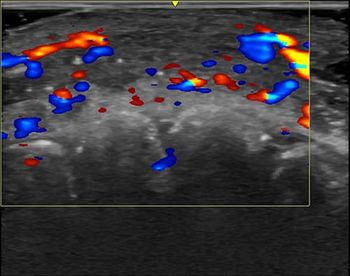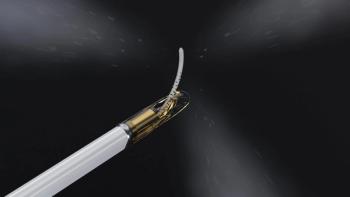
Philips adds 1-tesla magnet to NT line
The MRI division of PhilipsMedical Systems enjoyed a banner year thanks to its Gyroscan NTline, 1.5- and 0.5-tesla systems introduced at last year's RSNAmeeting (SCAN 12/29/93). While other vendors lamented the sorrystate of the MRI market this year,
The MRI division of PhilipsMedical Systems enjoyed a banner year thanks to its Gyroscan NTline, 1.5- and 0.5-tesla systems introduced at last year's RSNAmeeting (SCAN 12/29/93). While other vendors lamented the sorrystate of the MRI market this year, Philips set a pace to doubleits volume of MRI sales over 1993, according to Chris Farr, MRImarketing director.
Philips' performance was all the more remarkable consideringit was accomplished without an offering in the popular 1-teslasegment. That's due to change at next week's meeting, when Philipswill debut a 1-tesla Gyroscan NT scanner.
Philips has never sold a 1-tesla MRI offering, Farr said, butthe vendor has determined that the 1-tesla niche is simply toobig to ignore. The U.S. MRI market is dividing into thirds, withthe 1.5-tesla, 1-tesla and 0.5-tesla segments equally represented,according to Farr.
The 1-tesla NT will have all the functionality of the 1.5-teslamagnet, including echo-planar imaging and GRASE fast scanning.The 1-tesla NT is awaiting FDA 510(k) clearance.
In other modalities, Philips will show a mobile CT scannerbeing developed by Analogic (SCAN 11/9/94). Philips is one oftwo companies with which Analogic signed an OEM agreement, accordingto a Philips spokesperson in Shelton, CT. The identity of theother OEM has not been released.
Philips will display a new mobile C-arm, BV 212. The unit featuresa 12-inch image intensifier to enable clinicians to see more anatomyduring interventional studies. BV 212 has FDA clearance.
Philips will also debut EasyGuide Neuro, an image-guided surgeryworkstation. The system uses a light pen to register the positionof surgical instruments to image data contained in the workstation,according to the company.
Newsletter
Stay at the forefront of radiology with the Diagnostic Imaging newsletter, delivering the latest news, clinical insights, and imaging advancements for today’s radiologists.




























